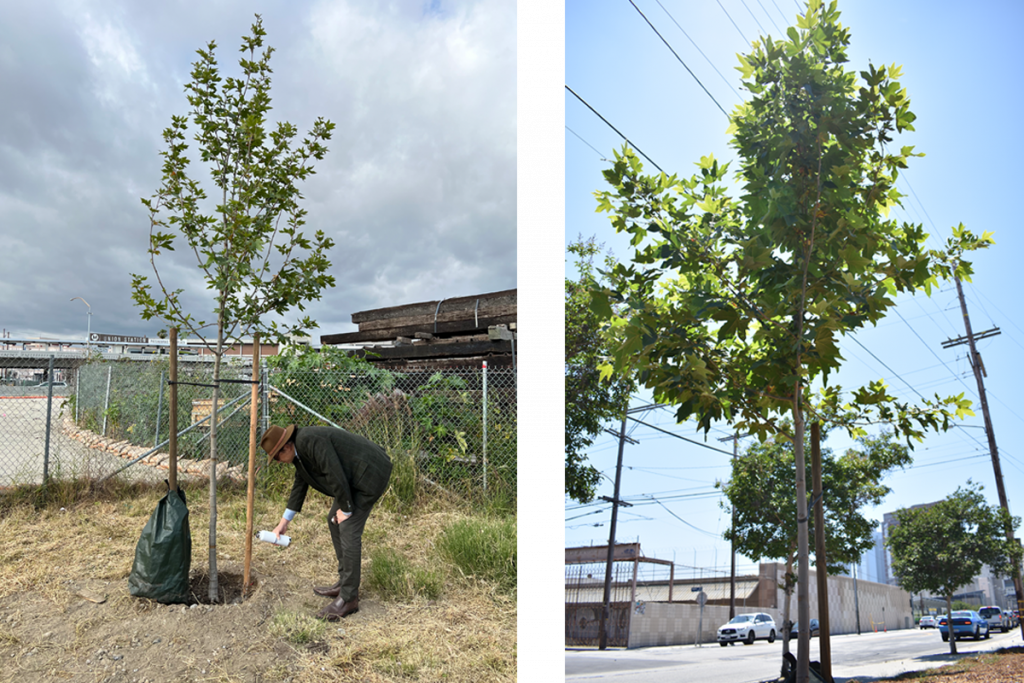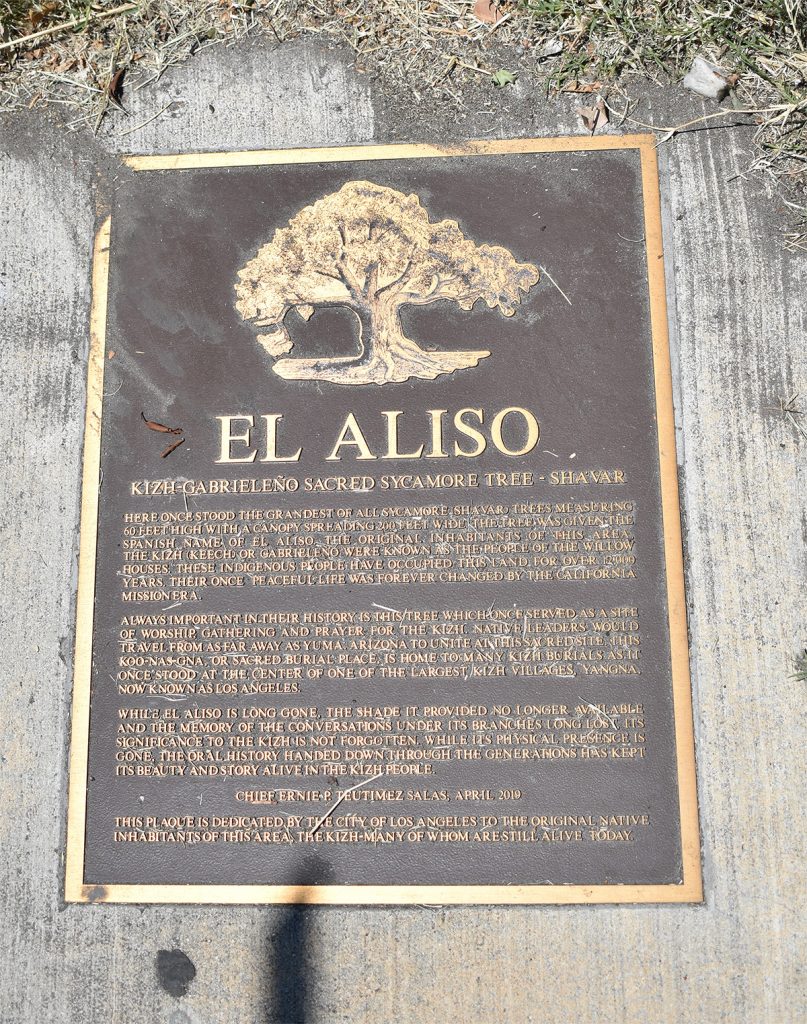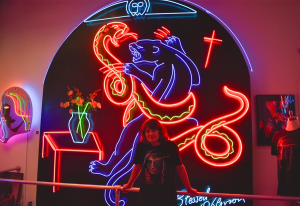The Aliso Tree

Despite hundreds of people passing by Commercial and Vignes Street on a daily basis, only a few ever notice the commemorative plaque affixed on the sidewalk just south of US Route 101. Even less people read it and learn the story about the Aliso Tree. Believed to have been 400 years old, the Aliso Tree, once the largest tree in Los Angeles, towered 60 feet high. This giant sycamore didn’t just provide shade from the sun, the tree was a sacred site for the Kizh (pronounced “Keech”), the Indigenous people of Los Angeles.
The native peoples of Southern California would gather beneath the far-reaching foliage of the Aliso, which provided over 200 feet of shade. The enormous tree was not just a place for meetings and social gatherings—its imposing height made it a natural marker for distance. Like a beacon, locals navigated around the area in relation to the tree. In addition to the Aliso’s practicality, its physical presence made it a cultural landmark.

In the 1850’s, the Kizh were forcibly displaced from their ancestral home to make way for urban development. As Los Angeles began to urbanize, the environment around the Aliso Tree gradually changed. It became more difficult for the Aliso to thrive and the tree unfortunately began to deteriorate in health. Decades of neglect and a rapidly changing environment led to the tree’s ultimate death. In 1895, the Aliso Tree was cut down.
Stroll down Commercial Street today and one will notice a young California Sycamore thriving, just north of the commemorative plaque. In the spring of this year, ADLA planted a young Sycamore with the hopes that it serves as a reminder of the past and a symbol of what can be.



